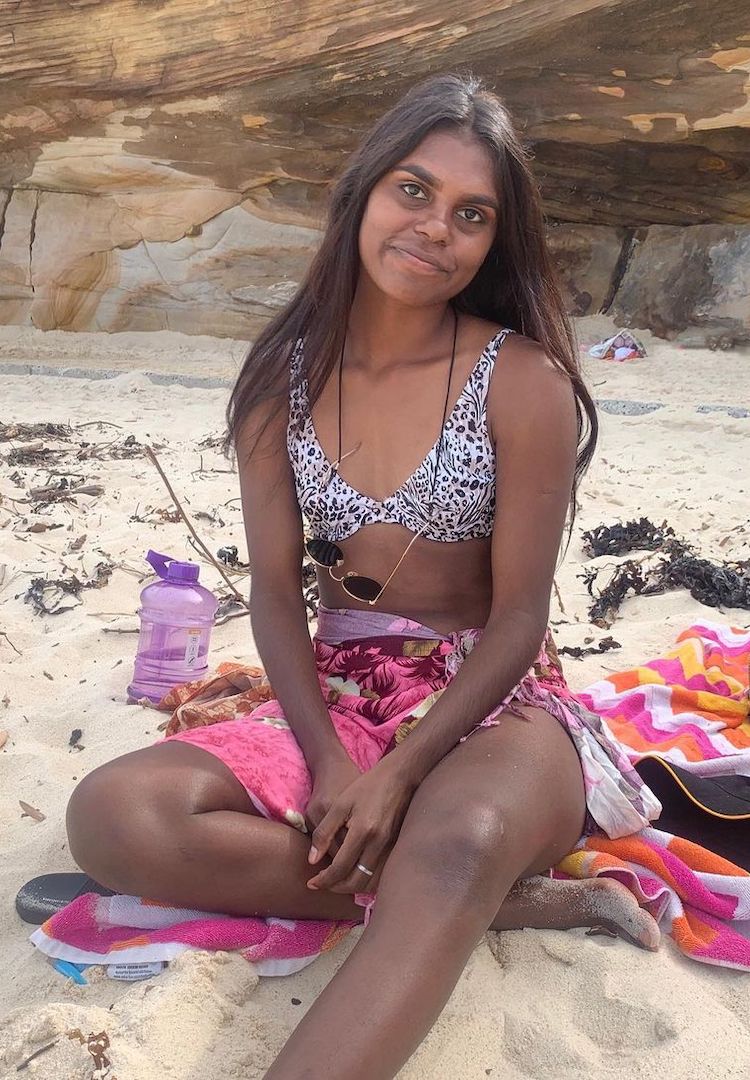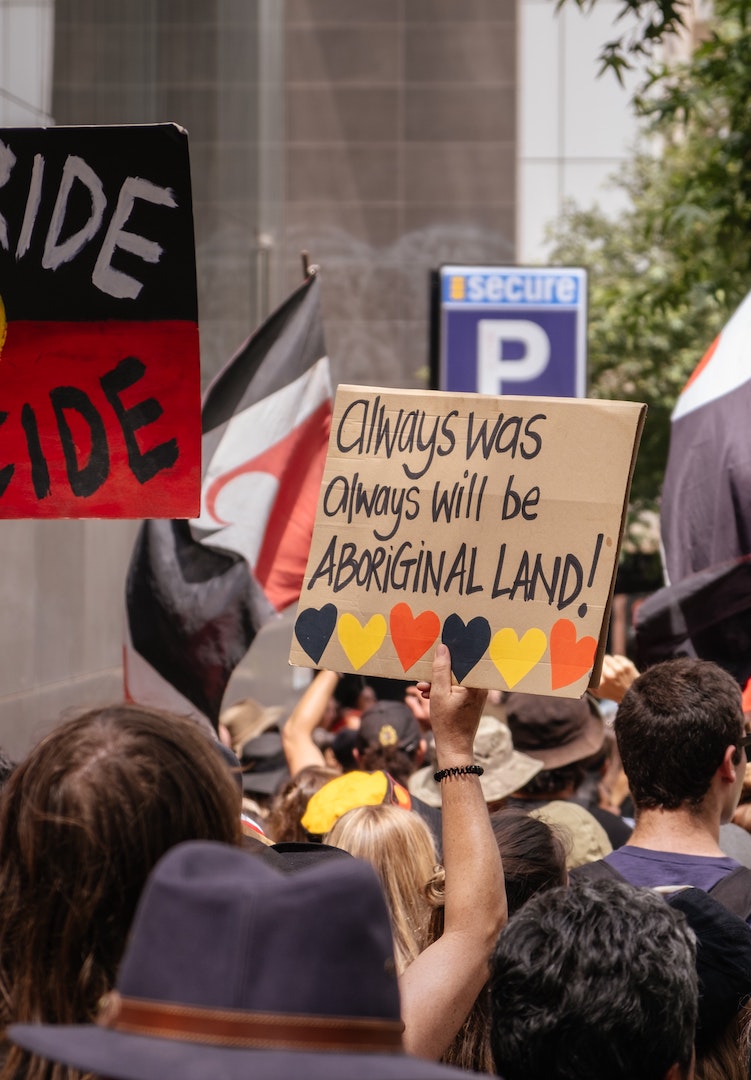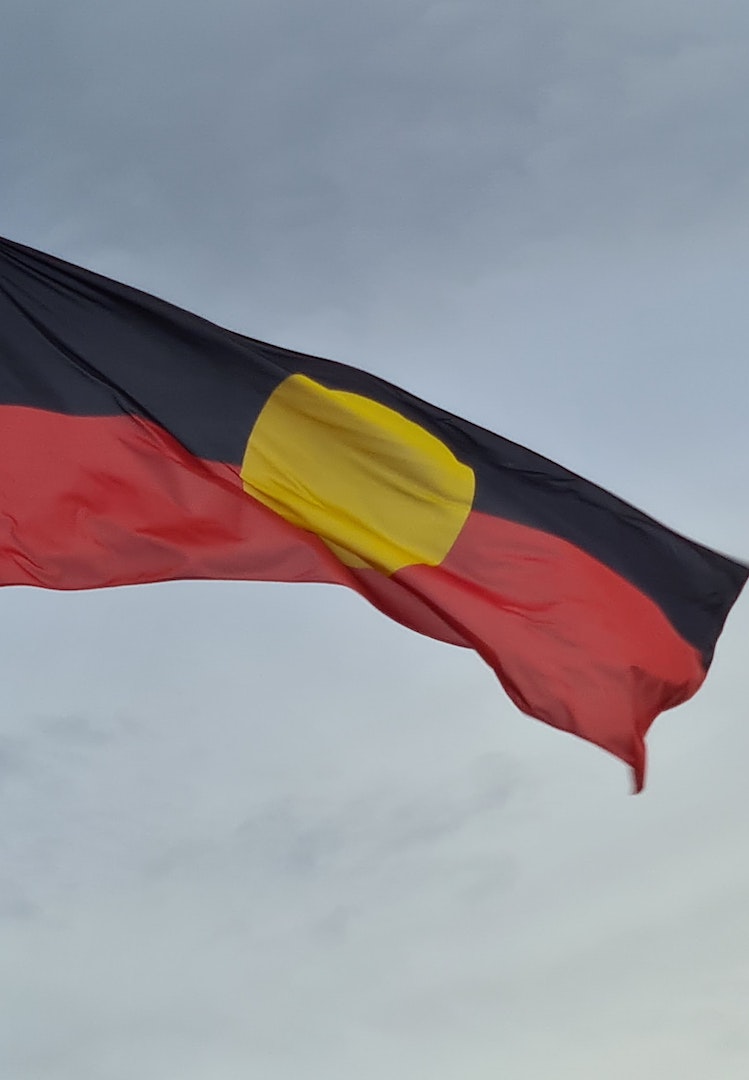Is it cultural appropriation for non-Indigenous people to wear Indigenous Australian designs?
IMAGE VIA CLOTHINGTHEGAPS/INSTAGRAM
WORDS BY TORI MATHISON
Appropriation or appreciation?
Despite our growing sensitivity and awareness of cultural appropriation, as a non-Indigenous person, it can sometimes be confusing navigating the space between allyship and appropriation.
Clothing The Gaps is an Aboriginal-owned and led social enterprise based in Victoria that creates clothing emblazoned with messages like ‘Always Was, Always Will Be’ and ‘Free the Flag’, using fashion to unite people from all backgrounds by sparking conversation.
Interested to learn how others navigate the world? Head to our Life section.
The brand’s name is a play on Closing the Gaps, which is an Australian Government health initiative created to reduce disadvantage among Aboriginal and Torres Strait Islander peoples, particularly regarding life expectancy, educational achievement, child mortality, access to early childhood education and employment outcomes.
Laura Thompson, Clothing The Gaps’ founder and managing director, and Sianna Catullo, the brand’s chief creative officer, let us in on how we can support these kinds of initiatives and brands without participating in cultural appropriation and risking being insensitive.
Hi Laura and Sianna! First things first, when is it not okay for non-Indigenous people to wear Indigenous designs?
We create our merch with our mob in our heart and everyone in mind, but we cannot speak on behalf of all Aboriginal and Torres Strait Islander people. These are our opinions and how we feel about non-Indigenous people wearing Aboriginal designs. It’s important to read the description of the products before buying. If a product is made for only Indigenous people, then it will clearly state that in either the product description or website.
If you’re still unsure if it’s appropriate for you, then you should ask before you buy it. People wearing products with Indigenous designs should feel comfortable and proud wearing it. You may encounter some awkward and unexpected questions or comments, so the person wearing it needs to be prepared.
How does it make you feel to see non-Indigenous people wearing your work?
When we see non-Indigenous people wearing our designs, we feel proud that they are repping our merch and culture. We are trained health professionals, not designers or marketing people. But our experience in health promotion and messaging has helped us with our strategy, plus we are super passionate. We always have big ‘phew’ moments in the office, when people love our products and support and get behind the campaigns and causes that matter most to us.
When we see Aboriginal designs in the world, it means Indigenous people are not invisible in the landscape. Our tees are conversation starters, for example, we have our ‘Free The Flag’ tee. The more meaningful tees [there are] in the world means more conversations. We wear our values on our tees and we are proud that there are other people who share the same values as us. There are so many non-Indigenous allies that truly and genuinely want to make our country better for First Nations peoples.
View this post on Instagram
RESTOCKED: Free the Flag 📸 @cremedelazem #FreeTheFlag #FlagRights #ClothingTheGap
As a non-Indigenous person, how can you tell if an item is made for everyone/anyone to wear or is specifically made for First Nations peoples to wear?
If one of our Clothing The Gaps products is made specifically and just for First Nations people we will clearly state this in the product description. For example, the ‘Shades of Deadly’, ‘Deadly’ or ‘Black Magic’ slogans are made for mob. If you don’t understand the use of the lingo (language) on the tee… then it’s probably not for you.
Clothing The Gaps is all about starting important conversations, how does fashion help facilitate these conversations?
Our products at Clothing The Gaps make it easier to lead into and facilitate conversations and have them in a not so confronting and intense way. These conversations are important and can be heavy and be hard to initiate, [but] the tees make these conversations easier to start. Fashion influences people. We want people to believe that it is cool to care, stand for something and speak out about it. Our clothes, our brand and platform provides our customers with this opportunity.
What are some actions we can take to help support Indigenous designers other than buying clothes?
If you want to support Indigenous designers but not buy their clothes then you can:
- Follow their social media platforms.
- Share their stuff.
- Elevate their voices.
- Choose NOT to buy clothes that are culturally appropriating and capitalising off Indigenous culture. Who you choose not to support and what not to buy is equally as important as who you do choose to support.
In terms of fashion labels, how can we tell what is Indigenous-owned and what is not?
Fashion labels who are Indigenous-owned will clearly state that they are an [Indigenous] owned and led brand. Aboriginal businesses can also have a Supply Nation certification that endorses the fact they are Indigenous-owned. If you are still left wondering, ask questions, then hit them up or ask other First Nations peoples about them. Don’t be fooled by Black (Indigenous) models on socials and websites.
Do you believe wearing Indigenous designs is a form of allyship, or is it more performative activism/virtue signalling?
Purchasing from Aboriginal brands, businesses and wearing Indigenous design is surface-level allyship. There needs to be more commitment other than buying from Bla(C)k brands. Wearing Aboriginal design is not dismantling a system that oppresses BIPOC people. People need to do more and learn more. Wearing our tees is the starting point. We have equipped you with our merch and the educational content to go out in the world, have these important conversations and find ways to do more and support more.
What do you wish people knew about Indigenous designs?
There are hundreds of different countries, language groups and mobs all over Australia. Those countries have different stories, practices and values that are expressed through art. Indigenous art and design looks and feels different depending on where it originates from. Often people believe Aboriginal art only comes from the Northern part of Australia, but Aboriginal art, design and people live all over Australia. We encourage people to purchase and support local Indigenous artists in the areas near their homes.
What do you hope for the future of Clothing the Gaps?
Clothing The Gap’s mission is to add years to Aboriginal peoples’ lives. We do this by advocating, motivating, educating, celebrating Bla(c)k excellence. Delivery of Aboriginal health promotion programs is part of the work we do. Our name ‘Clothing The Gaps’ is a play on words on the Australian government initiative ‘Close The Gap’.
We are working towards being completely self-funded through the sales of our products. This is what self-determination looks like. We are profit for purpose and paving our own pathway using business as our vehicle. Seeing our brand grow means more Indigenous employment. It’s been amazing being in the position to employ more Aboriginal staff members.
How does the process work for sourcing the designs and then selling them, how is the designer involved in the process?
From designing to speaking to suppliers, to marketing, to campaigning, to running the programs… we do it all! We are all over the whole process. It’s hard work but extremely rewarding when we see the effect it’s having on the world.
We occasionally collaborate with artists or other brands. Carla Scotto and HoMie are examples of this. They have been awesome allies and the relationship has been 100 per cent transparent and genuine. It is important to us that we only align with people or brands whose values and purpose align with ours.










